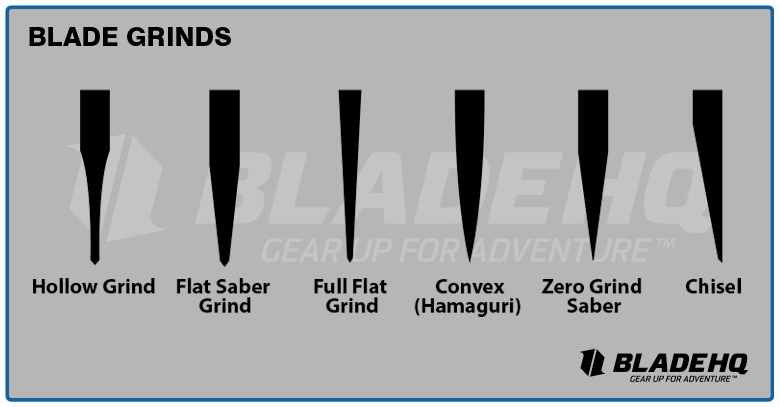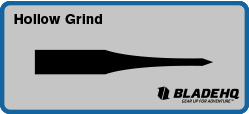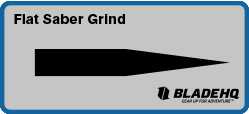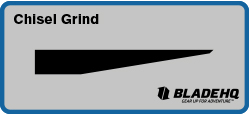If you follow Blade HQ’s main blog, then you probably saw this infographic last week:
There are seemingly endless things to learn about when you’re just getting into knives. You’ve got blade steels, blade shapes, handle materials, knife types, care and maintenance, and finally, blade grinds to master. For some reason, blade grinds was last on my priorities list of things to learn about. Blade grinds just seemed super intimidating to me, and I think that’s why I decided to avoid them altogether until just recently.
Really though, blade grinds aren’t all that bad and once you nail them down, it gives you a much better understanding about what types of blades will work best for you and your needs. Not all of the blade grinds out there are commonly found in OTF knives, so I’m just going to cover the ones you’re most likely to see in the OTF world. You’re welcome.
If you care to see the info on all of the different grinds, head on over to Blade HQ’s Knife Blog to get the full 411 on blade grinds.
“Hollow Grind –Bevels are ground to form a concave radius. The bevels can span either the full width of the blade or just a portion of it.”
Hollow grinds are often found on hunting knives because the grind is ideal for skinning and field dressing animals. You’re not going to use an OTF with a hollow grind on any hunting trip, but it’s good to know the background information, nonetheless. Because of the way hollow grinds are constructed, they have a super sharp edge, but they’re typically not super sturdy.
“Flat Saber Grind – Flat bevels begin near the center of the blade and continue to the cutting edge.”
Flat grinds are good for precision work, like wood carving, but they can be somewhat delicate. A flat saber grind is still good for precision work (but not as good as the normal flat grind), and it is a bit stronger, thanks to the saber. Saber grinds add thickness to a blade, which often means that particular blade won’t be as good at slicing as a blade that doesn’t have a saber grind.
“Chisel Grind – Ground only on one side of the blade. The grind can be flat or hollow.”
Chisel grinds make for sharp blades, and I’ve heard they’re actually great in kitchen knives because they are great slicers.
Most likely, you won’t be using your OTF for lots of heavy duty cutting. More likely, you’ll just be using your OTF for light day-to-day tasks as they arise, like opening boxes, cutting a tag off of something, opening a letter here or there, etc. For this reason, it might not be essential for you to know what tasks each grind excels at, but knowing about blade grinds can be super useful when it’s time to sharpen that OTF of yours. After all, you can’t properly sharpen a knife if you don’t know what the blade grinds are supposed to look like.
What questions do you have about blade grinds?




